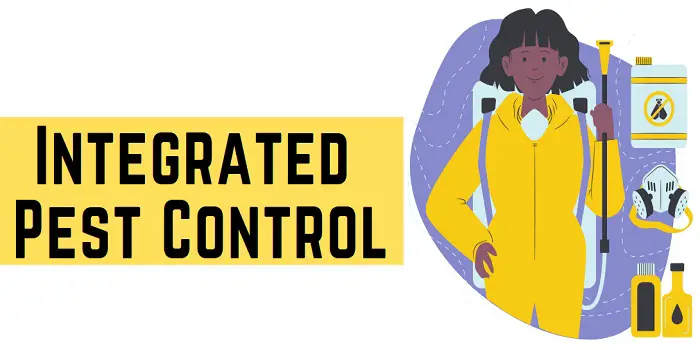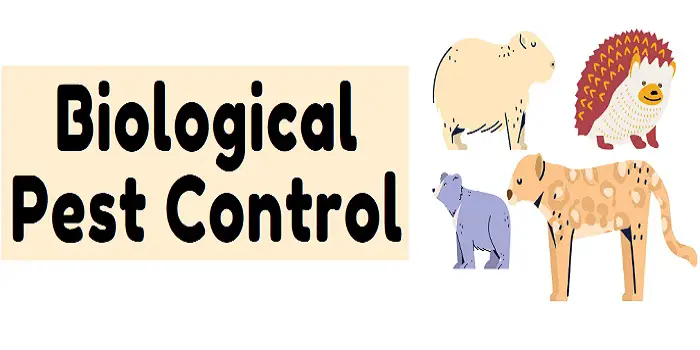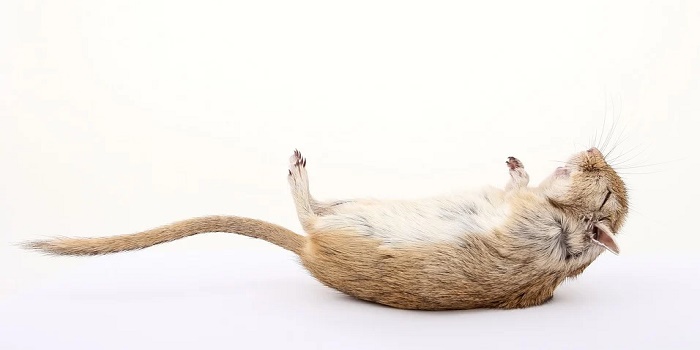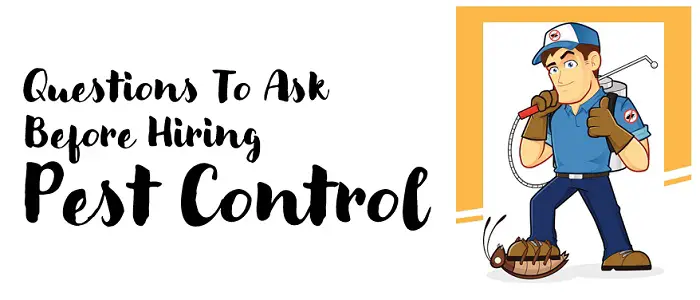
Insects and other pests can be annoying.
Especially for farmers who are dependent upon vegetation for their livelihood, protecting crops from harmful pests is their top priority.
In order to effectively combat the problem, many people turn to an integrated pest control solution.
What is Integrated Pest Control?
Integrated Pest Control, or IPC, is a medium to eradicate pest-related concerns in the agricultural industry.
It conjoins the chemical and cultural methods of removing pests, resulting in a sustainable and well-rounded approach.
Essentially, it condemns the excessive use of chemical insect repellents, rather, they emphasize the utilization of only the compounds that are beneficial to the crop it is being sprayed on.
Hence, it can also be used to terminate insects in residential areas.
Consequently, this method ensures no harm is done to the human beings that work in the said fields along with the surroundings, i.e., it does not contribute to any type of pollution.
How does Integrated Pest Control Programs Work?
As widely known across the globe, this program is not just a fixture for some time.
Instead, this procedure is exceptionally practical in the long run. Therefore, it has a structured framework that needs to be followed to achieve effective results.
1- Recognizing the Issue and Setting an Action Plan
Before anything, the first and foremost aspect that needs to be addressed is to seek out the pest-infested area.
In addition, the issue’s severity is important to highlight.
In this way, one can know when this infestation is becoming stressful for people, indicating that the problem is becoming serious.
2- Distinguishing the Type of Insects
For an effective action plan, knowing just what type of pests one is dealing with is important.
Through this, the amount of pesticide to be used can be decided, or even if they are needed in the first place, since many insects can be terminated through more natural and less harmful means.
3- Monitoring the Pests
Many of the pests that hoard the crops or gardens are harmless.
Hence to use chemicals on them would be inadequate and more harmful to the surroundings.
4- Deterrence and Prevention
Once the former steps have been completed, the IPM team identifies all the possible techniques on how this issue could be prevented.
If the pests are feeding on the crops, the cultural and traditional method of crop rotation is considered.
Alternate ways include planting the crops with a pest-free rootstock and using manure that repels such insects.
These are very much useful in the sense that they are harmless to their surroundings.
5- Control
If all else fails, the IPM team then focuses on the easiest types of insects that can be more easily terminated before moving on to taking more drastic measures.
Some other techniques may include:
- Trapping,
- weeding,
- physical removal,
- heating or cooling treatments,
- pesticide application,
- Using one of the predators the identified pests might have.
Advantages and Disadvantages of Integrated Pest Control
As such, there are many benefits and drawbacks to implementing integrated pest management.
Some of the major ones include:
The Pros
Essentially, IPM has many bright sides to it, being the most effective method of getting rid of pests being the first.
Other benefits of opting for integrated pest control include:
1- No Resistance:
Insects and pests are known to have grown resistant to many pesticides.
However, in the case of integrated pest control, we see no chemicals being used.
This ensures the pests cannot grow resilient to this specific process.
2- Balanced Eco-System:
The control team guarantees the most natural possible way out of this issue.
Since not all insects residing in an area are harmful to the farm produce or to the environment, the team comes up with a solution that eliminates harmful pests but keeps the harmless ones safe.
3- Presence of Biodiversity:
It is a known fact that the unexplained loss of any organism could lead to an unbalanced ecosystem.
Integrated pest control methods are seen to be nature friendly. Hence the organisms coexisting in the same area are safe running around.
Consequently creating a balance in biodiversity.
4- Pocket Friendly:
As this pest control approach is seen to be natural, it is nowhere near expensive.
5- No Pollution:
There are no risks of any type of pollution.
The underground water remains clean and free of chemicals, and the air is the least affected.
6- Healthy Plants:
Since this method of pest control does not involve a rigorous use of chemicals, it contributes heavily to the thriving of plants and vegetation.
Integrated pest control eliminates harmful insects and keeps the greenery intact.
7- Long-Term Solution:
Once integrated pest control is performed, it is likely that you will not have to worry about pests again for an exceptionally long time.
The Cons
Similar to every other aspect of life, IPM also comes with a few disadvantages. These include:
1- Technicalities:
While the procedure may not be very costly, there is no denying that it is indeed complex.
Pest control specialists need to be trained in order to carry out the process effectively.
Due to this very reason, the farmers often have to skip this choice of integrated pest control and opt for traditional pesticides instead.
Additionally, workers who excel in integrated pest control are in high demand – making them overwork themselves to a great extent.
2- Time-Consuming:
Since the procedure is fairly complex, it can often be time-consuming.
Everything needs to be closely analyzed before pest control even begins, allowing the insects to cause much harm before they are eliminated.
3- Resources:
Various other resources are required to carry out these practices instead of using pesticides.
The availability of such equipment can prove to be a liability.
4- Financial Constraints:
Even the initial stages of integrated pest control require money.
While the amount may not be a lot, not everyone can always afford it.
In Conclusion
Considering all the possible outcomes, one can easily infer how anyone would opt for Integrated Pest Control if the need arises.
It proves to be more practical in the long run and ensures the safety of the rest of the pests as well.
Though the disadvantages make a good argument for why this method should be avoided, it must be remembered that traditional methods of pest control require the use of harmful chemicals that are detrimental to the environment.
Keeping in mind the recent issues related to climate change, it is better to opt for Integrated Pest Control which offers an environmentally friendly solution to all your problems.

Welcome to ProShieldPest.com. I am Tina Jones. I have been working as a pest removal professional in Winslow, Arizona lately. At present, I love to spend my time with my family as a retiree.
Here I share all my knowledge and experiences to help people understand better how they can stop pests at their homes without actually killing them. Hopefully, the information you will find here will help in safeguarding your home! You can check more about me here.




